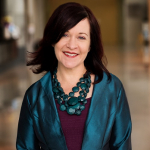
Ms. Ruby Lopez Harper
When Will Actions Follow Words? A Survey of Salaries Across Local Arts Agencies
Posted by Mar 13, 2019

Ms. Ruby Lopez Harper
Local Arts Agencies continue to be the leading voice in support of arts and culture in communities around the country. In addition to supporting artists and arts and culture organizations, LAAs are instrumental in setting the pace for adoption of equitable policy, programs, and resource distribution. Over the decades, LAAs have continued to find ways to serve their communities more fully, advocate more effectively, and provide support for arts and culture organizations and artists. LAAs have struggled with recessions, changing political leadership, and the challenge of individuals understanding the value of investing in arts and culture—all while balancing staff capacity and resources. The salary survey report in Americans for the Arts’ 2018 Profile of Local Arts Agencies sheds light on certain disparities in representation. The results reinforce the need for urgency and intentional action to improve compensation, diversity, and parity in the field.
Read More




































